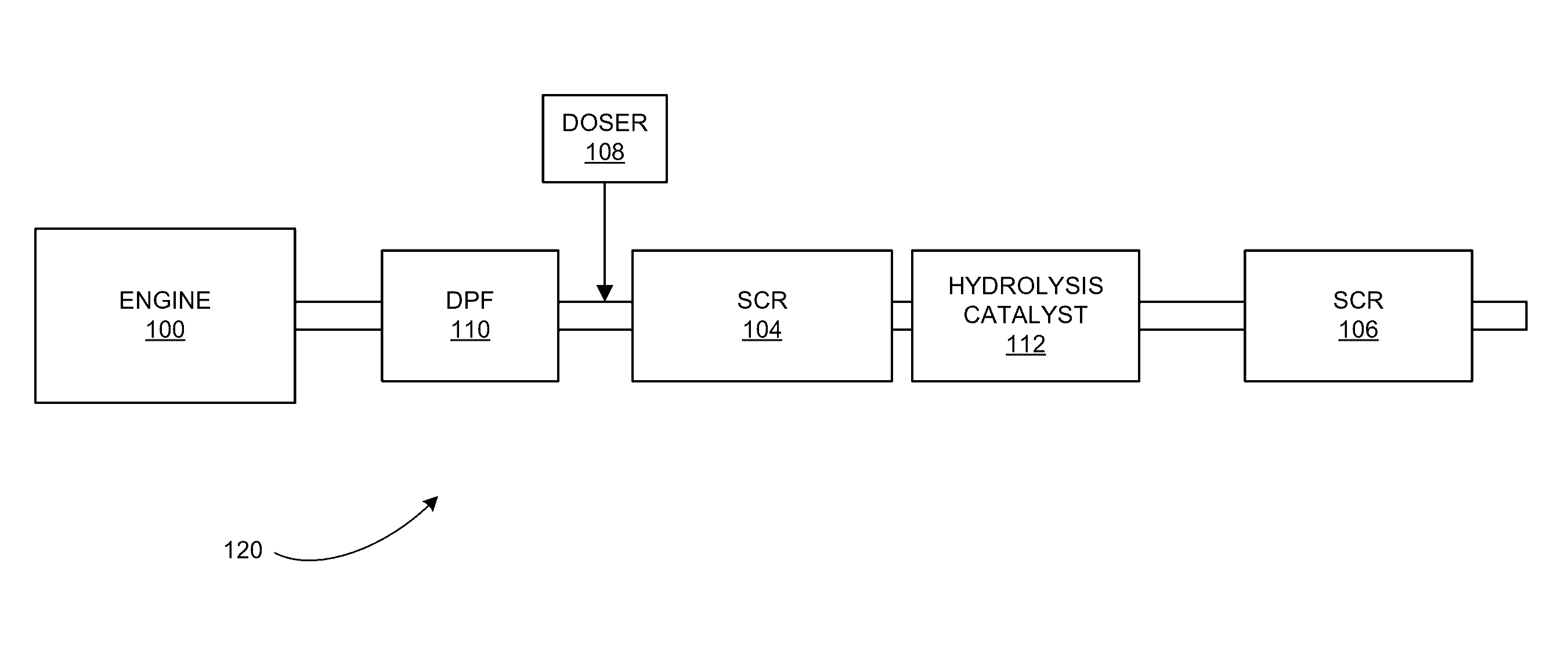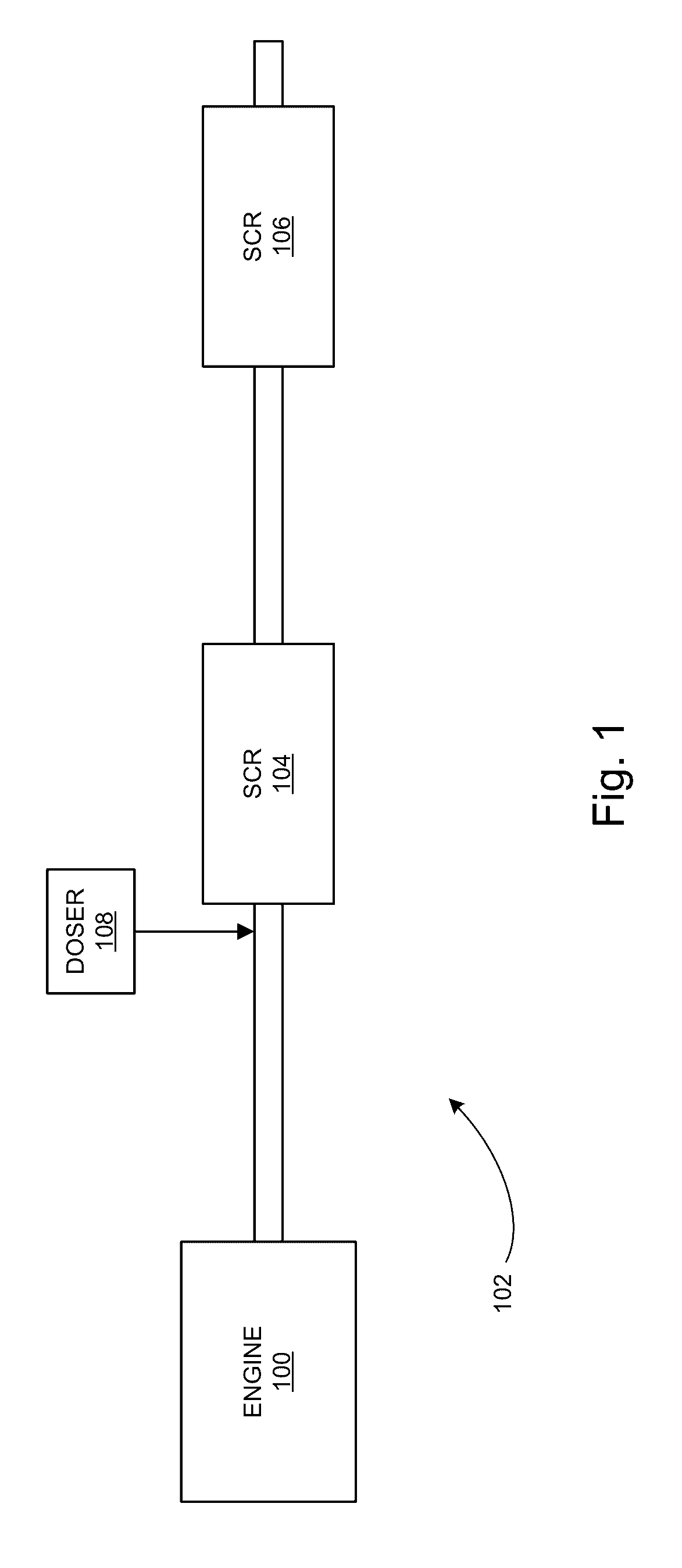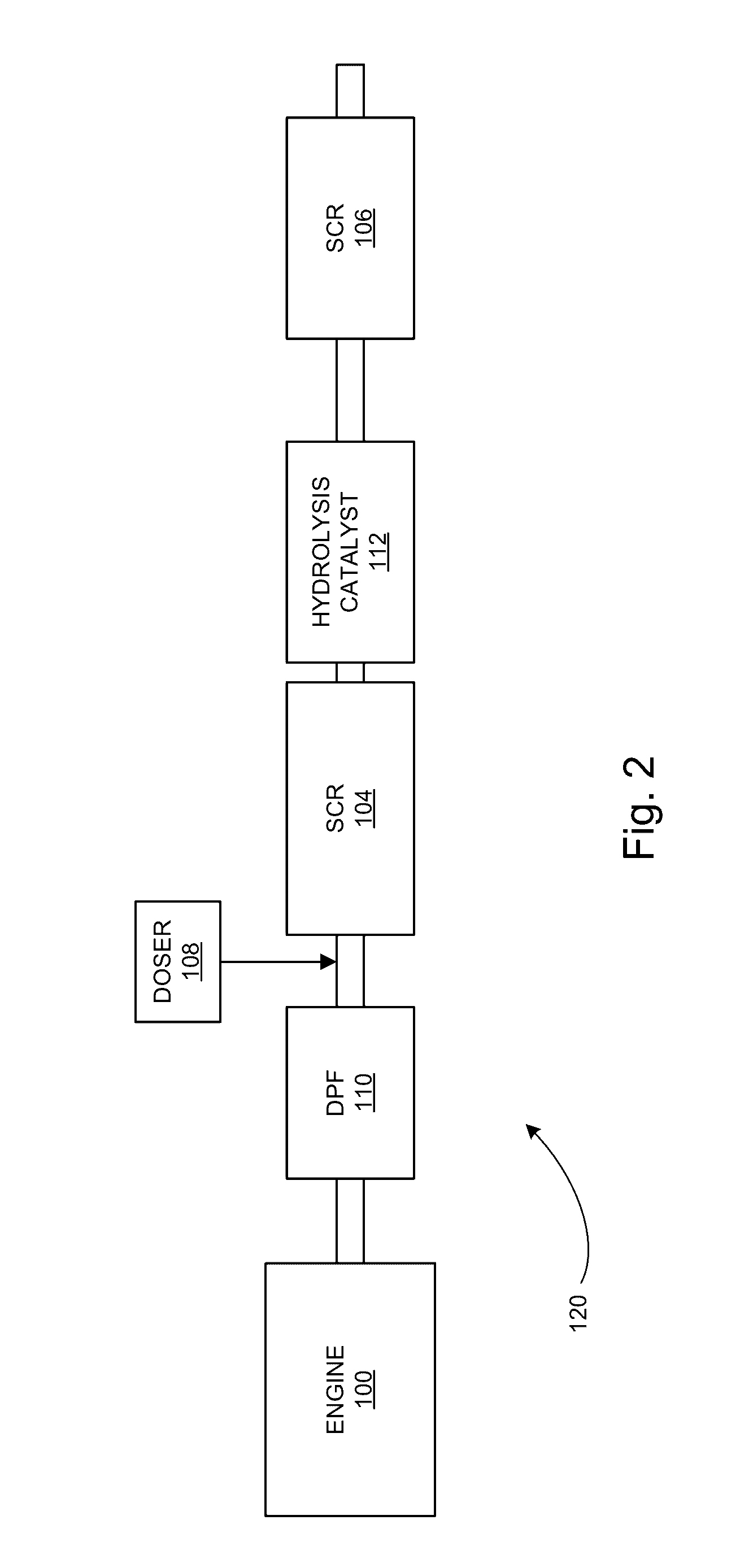Advanced exhaust aftertreatment system architecture
- Summary
- Abstract
- Description
- Claims
- Application Information
AI Technical Summary
Benefits of technology
Problems solved by technology
Method used
Image
Examples
Embodiment Construction
[0014]N2O may be formed from an undesired reaction between NOx and NH3 over a catalytic device, such as an SCR catalyst. The present disclosure is directed to advanced exhaust aftertreatment system architectures configured to minimize N2O formation, while improving de-NOx performance. Based on empirical measurements and reaction engineering principles, it has been found that NOx and NH3 concentration profiles in catalysts exponentially decline along the axial direction of the catalyst (e.g., along the exhaust gas flow direction) due to their consumption by SCR reactions. This also results in a decrease in N2O formation, which is a byproduct of the SCR reaction, along the axial length of the catalyst.
[0015]According to various embodiments, exhaust aftertreatment system architectures include a combination of SCR catalysts having different catalyst formulations. In an embodiment, part of an upstream SCR catalyst, where a majority of NOx conversion and N2O formation occurs, includes a c...
PUM
| Property | Measurement | Unit |
|---|---|---|
| Mass | aaaaa | aaaaa |
| Mass | aaaaa | aaaaa |
| Length | aaaaa | aaaaa |
Abstract
Description
Claims
Application Information
 Login to view more
Login to view more - R&D Engineer
- R&D Manager
- IP Professional
- Industry Leading Data Capabilities
- Powerful AI technology
- Patent DNA Extraction
Browse by: Latest US Patents, China's latest patents, Technical Efficacy Thesaurus, Application Domain, Technology Topic.
© 2024 PatSnap. All rights reserved.Legal|Privacy policy|Modern Slavery Act Transparency Statement|Sitemap



